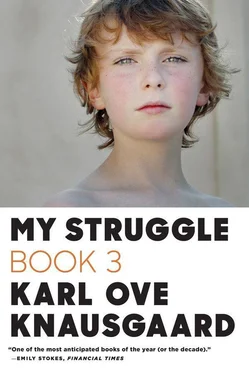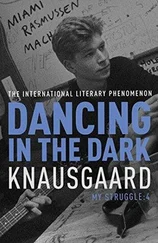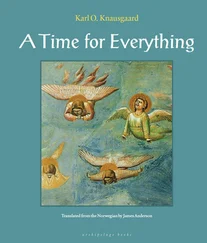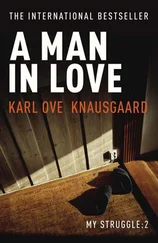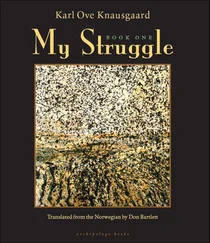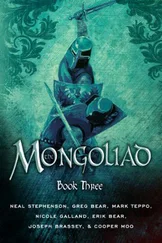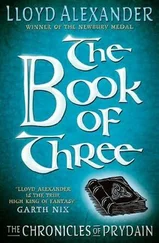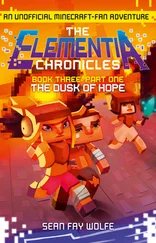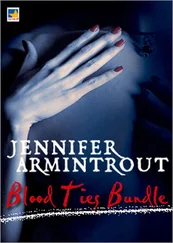Karl Ove Knausgaard
My Struggle: Book Three
One mild, overcast day in August 1969, a bus came winding its way along a narrow road at the far end of an island in southern Norway, between gardens and rocks, meadows and woods, up and down dale, around sharp bends, sometimes with trees on both sides, as if through a tunnel, sometimes with the sea straight ahead. It belonged to the Arendal Steamship Company and was, like all its buses, painted in two-tone-light and dark-brown livery. It drove over a bridge, along a bay, signaled right, and drew to a halt. The door opened and out stepped a little family. The father, a tall, slim man in a white shirt and light polyester trousers, was carrying two suitcases. The mother, wearing a beige coat and with a light-blue kerchief covering her long hair, was clutching a stroller in one hand and holding the hand of a small boy in the other. The oily, gray exhaust fumes from the bus hung in the air for a moment as it receded into the distance.
“It’s quite a way to walk,” the father said.
“Can you manage, Yngve?” the mother said, looking down at the boy, who nodded.
“Course I can.”
He was four and a half years old and had fair, almost white hair and tanned skin after a long summer in the sun. His brother, barely eight months old, lay in the stroller staring up at the sky, oblivious to where they were or where they were going.
Slowly they began to walk uphill. It was a gravel road, covered with puddles of varying sizes after a downpour. There were fields on both sides. At the end of a flat stretch, perhaps some five hundred meters in length, there was a forest that sloped down to pebbled beaches; the trees weren’t tall, as though they had been flattened by the wind blowing off the sea.
On the right, there was a newly built house. Otherwise there were no buildings to be seen. The large springs on the stroller creaked. Soon the baby closed his eyes, lulled to sleep by the wonderful rocking motion. The father, who had short, dark hair and a thick, black beard, put down one suitcase to wipe the sweat from his brow.
“My God, it’s humid,” he said.
“Yes,” she replied. “But it might be cooler nearer the sea.”
“Let’s hope so,” he said, grabbing the suitcase again.
This altogether ordinary family, with young parents, as indeed almost all parents were in those days, and two children, as indeed almost every family had in those days, had moved from Oslo, where they had lived in Thereses gate close to Bislett Stadium for five years, to the island of Tromøya, where a new house was being built for them on an estate. While they were waiting for the house to be completed, they would rent an old property in Hove Holiday Center. In Oslo he had studied English and Norwegian during the day and worked as a nightwatchman, while she attended Ullevål Nursing College. Even though he hadn’t finished the course, he had applied — and had been accepted — for a middle-school teaching job at Roligheden Skole while she was to work at Kokkeplassen Psychiatric Clinic. They had met in Kristiansand when they were seventeen, she had become pregnant when they were nineteen, and they had married when they were twenty, on the Vestland smallholding where she had grown up. No one from his family went to the wedding, and even though he is smiling in all the photos there is an aura of loneliness around him, you can see he doesn’t quite belong among all her brothers and sisters, uncles and aunts, male and female cousins.
Now they’re twenty-four and their real lives lie before them. Jobs of their own, a house of their own, children of their own. There are the two of them, and the future they are moving into is theirs, too.
Or is it?
They were born in the same year, 1944, and were part of the first postwar generation, which in many ways represented something new, not least by dint of their being the first people in this country to live in a society that was, to a major degree, planned. The 1950s were the time for the growth of systems — the school system, the health system, the social system, the transport system — and public departments and services, too, in a large-scale centralization that in the course of a surprisingly short period would transform the way lives were led. Her father, born at the beginning of the twentieth century, was raised on the farm where she grew up, in Sørbøvåg in the district of Ytre Sogn, and had no education. Her grandfather came from one of the outlying islands off the coast, as his father, and his before him, probably had. Her mother came from a farm in Jølster, a hundred kilometers away, she hadn’t had any education either, and her family there could be traced back to the sixteenth century. As regards his family, it was higher up the social scale, inasmuch as both his father and his uncles on his father’s side had received higher education. But they, too, lived in the same place as their parents, Kristiansand, that is. His mother, who was uneducated, came from Åsgårdstrand, her father was a ship’s pilot, and there were also police officers in her family. When she met her husband she moved with him to his hometown. That was the custom. The change that took place in the 1950s and 1960s was a revolution, only without the usual violence and irrationality of revolutions. Not only did children of fishermen and smallholders, factory workers and shop assistants start at university and train to become teachers and psychologists, historians and social workers, but many of them settled in places far from the areas where their families lived. That they did all this as a matter of course says something about the strength of the zeitgeist. Zeitgeist comes from the outside, but works on the inside. It affects everyone, but not everyone is affected in the same way. For the young 1960s mother, it would have been an absurd thought to marry a man from one of the neighboring farms and spend the rest of her life there. She wanted to get out! She wanted to have her own life. The same was true for her brothers and sisters, and that was how it was in families countrywide. But why did they want to do that? Where did this strong desire come from? Indeed, where did these new ideas come from? In her family there was no tradition of anything of this kind: the only person who had left the area was her uncle Magnus, and he had gone to America because of the poverty in Norway, and the life he had there was for many years hardly distinguishable from the life he’d had in Vestland. For the young 1960s father, things were different: in his family you were expected to have an education, though perhaps not to marry a Vestland farmer’s daughter and settle on an estate near a small Sørland town.
But there they were, walking on this hot, overcast day in August 1969, on their way to their new home, him lugging two heavy suitcases stuffed with 1960s clothes, her pushing a 1960s stroller with a baby dressed in 1960s baby togs, white with lace trim everywhere, and between them, tripping from side to side, happy and curious, excited and expectant, was their elder son, Yngve. Across the flat stretch they went, through the thin strip of forest, to the gate that was open and into the large holiday center. To the right there was a garage owned by someone called Vraaldsen; to the left large red chalets around an open gravel area and, beyond, pine forest.
A kilometer to the east stood Tromøya Church, built in 1150 of stone, but some parts were older and it was probably one of the oldest churches in the country. It stood on a small mound and had been used from time immemorial as a landmark by passing ships and charted on all nautical maps. On Mærdø, a little island in the archipelago off the coast, there was an old skip-pergård, a residence testifying to the locality’s golden age, the eighteenth and nineteenth centuries, when trade with the rest of the world, particularly in timber, flourished. On school trips to the Aust-Agder Museum classes were shown old Dutch and Chinese artifacts going back to that time and even further. On Tromøya there were rare and exotic plants that had come with ships discharging their ballast water, and you learned at school that it was on Tromøya that potatoes were first grown in Norway. In Snorri’s Norwegian king sagas the island was mentioned several times; under the ground in the meadows and fields lay arrowheads from the Stone Age and you could find fossils among the round stones on the long, pebbled beaches.
Читать дальше
